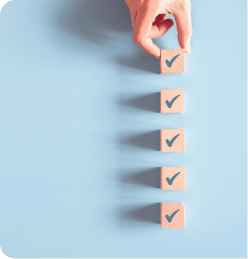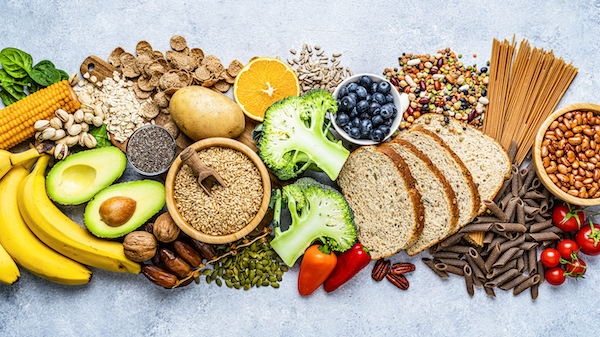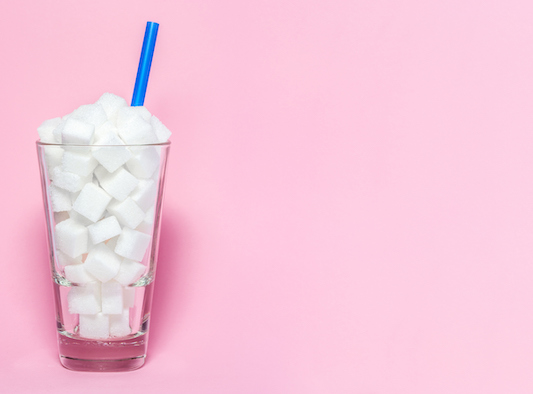New York Times best-selling author Susan Peirce Thompson, PhD, understands how hard it is to break deep patterns. She first overcame a serious addiction to drugs only to find herself held captive by the same addictive tendencies with food.

What was happening in her brain that kept pulling her into addiction — this time with food? To find the answer, Dr. Peirce Thompson became an expert in the neuroscience of food addiction and the psychology of eating. Her research led her to develop the Bright Line Eating approach — a structured eating plan that shows people with high susceptibility to food addiction how to rewire their brains so they can lose weight.
Here, Dr. Sharon Stills, NMD asks Dr. Peirce Thompson about the success of the Bright Line Eating approach and why not being perfect is essential to getting what you want.
Dr. Stills: Tell us about your own experience with weight loss. What challenges did you face?
Dr. Peirce Thompson: I went on my first diet when I was 10 years old. At 14, I discovered drugs as a way to lose weight. And eventually I burned my life to the ground. After I got clean and sober, food addiction just took over where my drug addiction had left off. I got fat — and then obese — very quickly.
But, the rest of the things in my life were going really well. After I got clean, I had a legitimate life that eventually led to me get a PhD in Brain and Cognitive Sciences at the University of Rochester.
During all of this time, I was so curious about how a brain goes so far off the rails. And, as curious as I was about that when it came to drugs, I was more curious about it when it came to food. It’s very hard to figure out your boundaries with food. With drugs and alcohol, the “zero” policy was a lot easier to implement.
In 2003, I joined a new food addiction group with much clearer boundaries around food. I did what they told me to do and I lost all my excess weight. I’ve kept it off ever since.
Dr. Stills: How did Bright Line Eating come to be?
Dr. Peirce Thompson: I got the idea to create Bright Line Eating when I had just finished reading a book called “Willpower” by Roy Baumeister. There’s a chapter that notes how Eric Clapton said he needed “bright lines” when it came to his sobriety.
The term “bright lines” is a legal term used to describe a clear, unambiguous boundary or rule that you apply consistently to produce predictable results. The author points out that the concept is now being used in other areas in regards to temptation and control — but that these boundaries won’t help with dieting because you have to eat to live.
I was stunned! From my own experience living free from food obsession, I knew that having bright lines could definitely help you lose weight and keep it off. Sure, you have to eat to live. But you don’t have to eat doughnuts! You don’t have to eat the processed crap they are selling us today. We just don’t.
One morning during my meditation, the universe just laid it out for me intensely, like a mandate: write a book called “Bright Line Eating.”
Dr. Stills: Tell us about Bright Line Eating and why the approach is so successful.
Dr. Peirce Thompson: Bright Line Eating takes a very different position than other approaches out there. Most plans talk about moderation, but Bright Line Eating talks about creating clear, unambiguous boundaries that you just don’t cross. The four Bright Lines are: eliminate sugar, eliminate flour, set up a schedule for your meals, and weigh your food.
For example, a smoker who wants to get healthy isn’t just trying to moderate her nicotine consumption by smoking less. Nicotine is addictive. If you’ve been a heavy smoker, you’re not going to be successful trying to dabble with cigarettes. You need to quit.
With food addiction, it can be the same story. For some of us, the “one-cookie” experiment goes about as well as the “one-cigarette” experiment goes for a smoker.
Bright Line Eating takes the stance that for some people, it’s actually easier to abstain from sugar and flour than it is to engage with them in moderation. Bright Line Eating is a weight loss program that helps people rewire the brain so it is no longer blocking their attempts to lose weight. The goal of Bright Line Eating is to live happy, thin and free. It’s also about boosting mood, getting yourself down into a right-sized body, and living free from obsessions with food and weight.
Dr. Stills: Many Women’s Health Network readers are over the age of 40. What about the particular issues these women face on their weight-loss journey?
Dr. Peirce Thompson: Women around perimenopause and menopause should know they’re dealing with the effects that estrogen dropping has on their weight. Estrogen helps regulate our blood sugar and makes us more sensitive to insulin. So with estrogen mostly out of the picture, we lose a lot of insulin sensitivity. That causes blood sugar issues and insulin is going to rise. Insulin blocks leptin at the hypothalamus and the brain stem. Leptin is the hormone that tells you that you’re done eating — you’re full!
So suddenly, you’re hungrier, you want to be more sedentary, your blood sugar is dysregulated and your insulin is elevated. Insulin is a hormone that influences fat-storage, especially around the middle. That’s why women have an issue with gaining weight in the belly around menopause.
Now here’s the thing: the foods that drive this process are sugar and flour. Basically during this time of life, you have a harder time regulating your blood sugar, and your insulin sensitivity goes down. So if you’re doing things to swing your blood sugar, like eating a muffin and drinking a mocha for breakfast — sugar and flour — then this is going to be a problem for you during menopause and after menopause, when it might not have been a problem for you before.
Dr. Stills: With the Bright Line Eating approach, what happens when you waver and reach for a cookie? What if you actually eat that cookie?
Dr. Peirce Thompson: We’re not called to be perfect all the time. But we are called to be unstoppable. That means simply resuming. There’s no shame. One of my vlogs is about the morning after a binge! After Bright Line Eating took off and my life got a lot more stressful, my previously long stretch of squeaky clean Bright Lines crumpled here and there. So it happens to everyone.
To help women get back on track, I have the “Four S’s of simply resuming”:
- Speed: You want to resume quickly. Immediately! Not Monday morning, not the first of the month, not on Jan. 1. You want to do it at the next meal.
- Self-compassion: I invite people to really use any break as a window that shows them how you talk to yourself when you feel like you’ve fallen short. Do you beat yourself up? What is that voice like in your head? A lot of us need to learn a gentler way of treating ourselves, a more compassionate way of walking with ourselves. A break can really become a tool to help us with that.
- Social support: This is the most effective tool when we’ve had a slip or break. Of course, the tendency is to isolate profoundly, so don’t do that.
- Seek the lesson: I have a “Permission to be Human Action Plan” in the back of my book. It’s a list of 10 questions that I invite people to journal on after they’ve had a break. After all, a break can be turned into a breakthrough.
Some people never break the Bright Lines. They get to an age where they’re done with the past. They are done! Food had them by the throat, they begin Bright Line Eating and it works, and they never go back.
 |
Learn more about Dr. Peirce Thompson and Bright Line Eating. |










